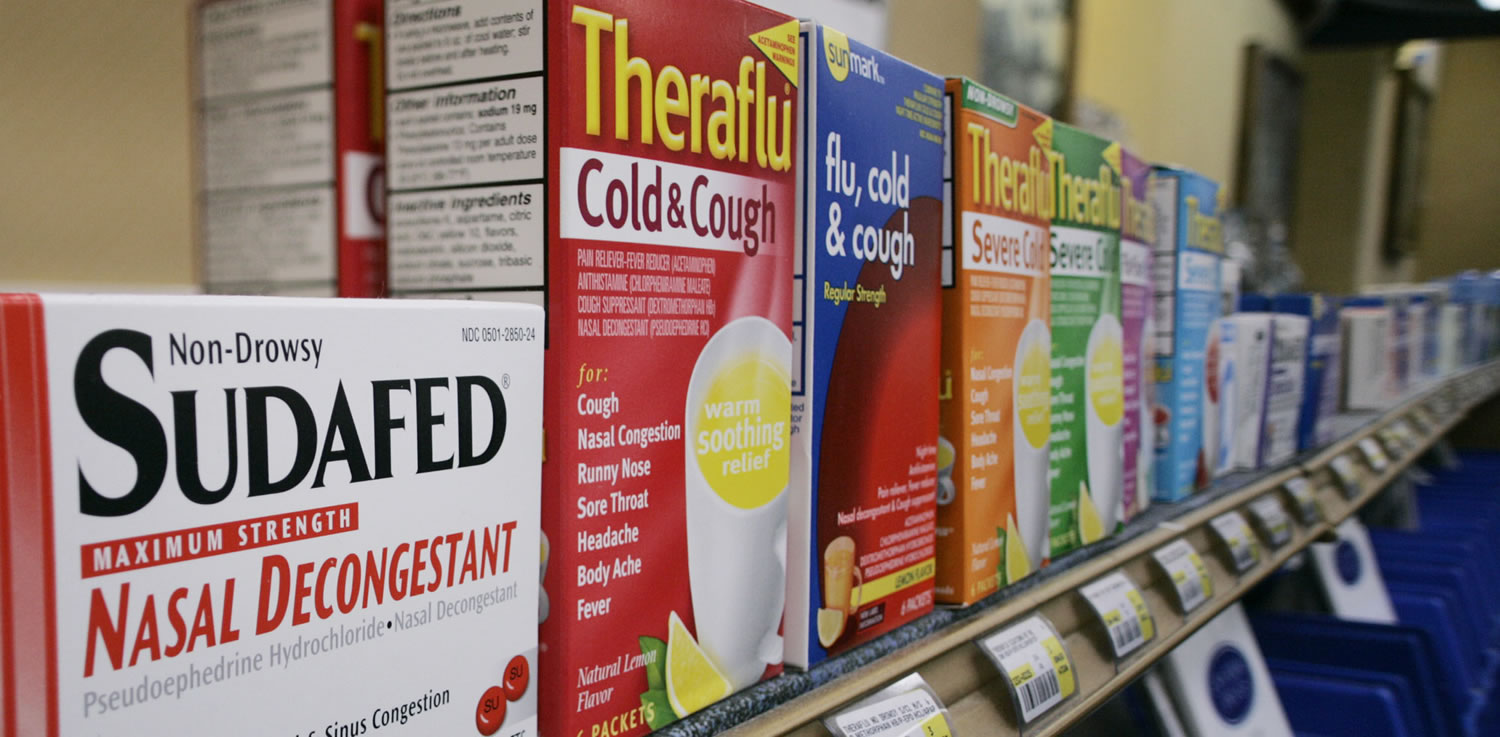In nine months, a statewide tracking system has blocked more than 13,000 sales of over-the-counter medicines with ingredients used to make methamphetamine.
The Washington State Board of Pharmacy activated the new monitoring system, the National Precursor Log Exchange, on Oct. 15, 2011. The electronic system monitors the sale of three ingredients — pseudoephedrine, ephedrine and phenylpropanolamine — which are in over-the-counter medicines for colds and allergies but are also used to make meth. State and federal laws limit the amount of medicine containing the ingredients a person can purchase.
Through July 2012, Washington’s system blocked the sale of 13,391 ingredients, which is equivalent to 37,172 grams, or 82 pounds, of ingredients.
“Our state was once called ‘the poster children for the meth epidemic,’ and we’re now recognized as a success story,” state Secretary of Health Mary Selecky said in a news release.
In 2010, the Washington Legislature passed a law tightening restrictions on the sales of products containing the methamphetamine precursors pseudoephedrine, ephedrine and phenylpropanolamine. The law requires pharmacies to keep the products behind the counter or in a locked display case and maintain a sales record. Unlike Oregon, a prescription is not required to purchase the drugs.
The law also required the Board of Pharmacy to implement the real-time electronic sales tracking system that went live last year. Prior to that, pharmacies and other retailers recorded sales information in written logbooks.
When people wish to purchase products with meth precursors, retailers run the buyer’s identification, such as a driver’s license, and details about the product through the system. Real-time information shows the cashier if the buyer has exceeded the allowed quantity of medicine. The system also flags drug purchases made in other states.
State and federal laws limit sales of meth precursors to 3.6 grams per transaction and no more than 9 grams in a 30-day period.
The nasal decongestant Sudafed, which contains pseudoephedrine, is sold in 30- and 60-milligram tablets. That means a person can purchase 120 30-milligram tablets at one time. A 24-hour tablet of Allegra-D or Claritin-D, both taken for allergies, contain 240 milligrams of pseudoephedrine, limiting buyers to 15 pills per purchase.
When states started monitoring pseudoephedrine sales, many manufacturers reformulated their drugs to include ingredients that cannot be used to make meth. Those variants don’t have to be kept behind the pharmacy counter, said John Guffey, a pharmacist at Kaiser Permanente’s Cascade Park office.
While not required by state law, Kaiser medical centers in Washington require a prescription when dispensing Sudafed and other products containing methamphetamine precursors, Guffey said. Kaiser still reports the sales information to the state even though it doesn’t use the same over-the-counter tracking system, he said.
The Columbian requested comment from several local pharmacies that use the tracking system. Those requests went unanswered.
Health and law enforcement officials consider the tracking system a key tool in combating meth production and abuse in the state.
“A decade ago, there were thousands of meth labs and dumps in our state,” Selecky said. “We can thank community action and legislation, including the new rules that created our tracking system, for turning the tide.”
Efforts to control pseudoephedrine sales have reduced the amount of locally and regionally produced methamphetamine, said Mike Cooke, Clark-Vancouver Regional Drug Task Force commander. But meth continues to make its way into the community from Southern California and Mexico, he said.
“Based on what we’re doing now and what we’re seeing,” Cooke said, “the meth we’re seizing is not coming from local, small labs.”




